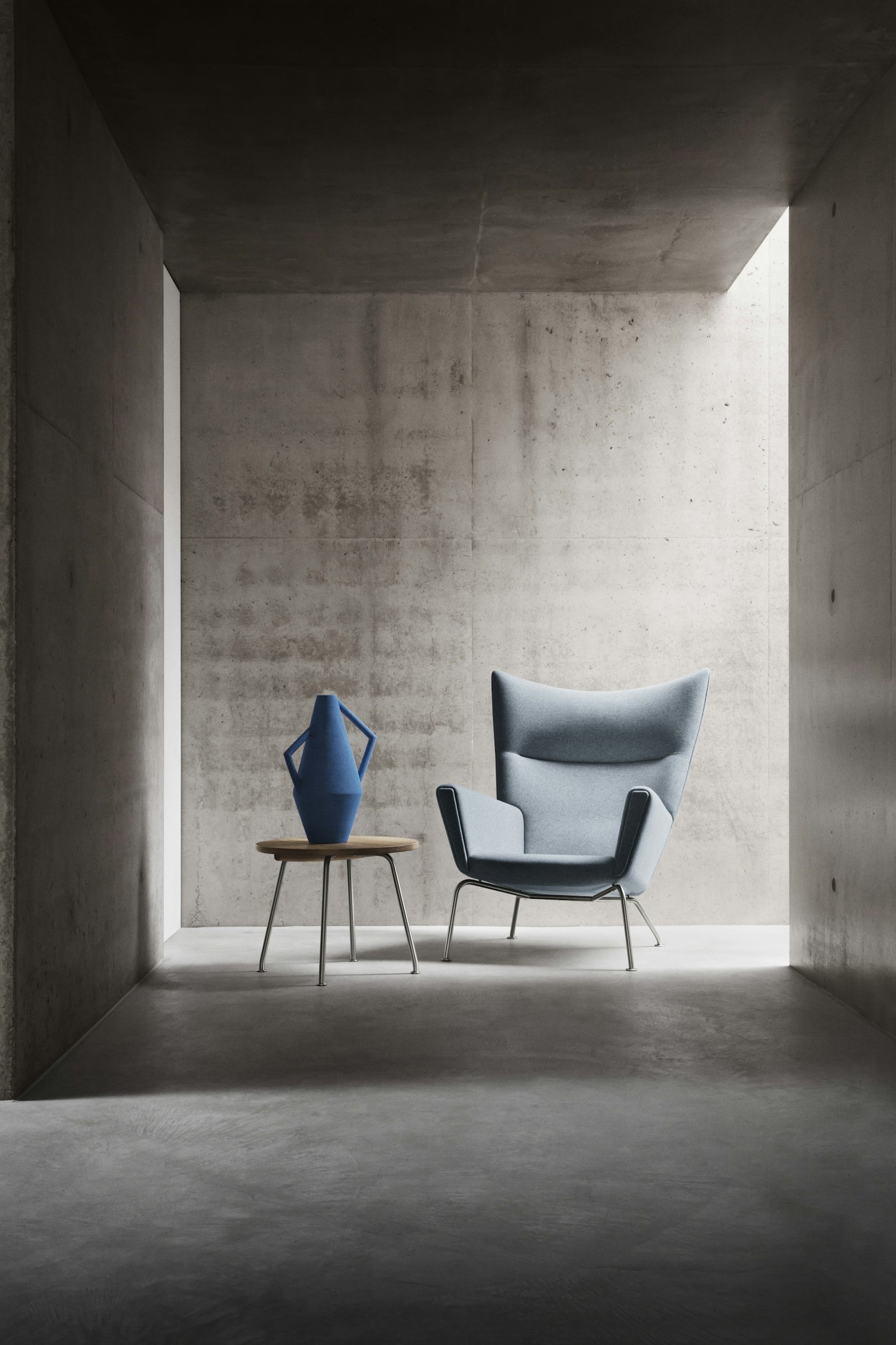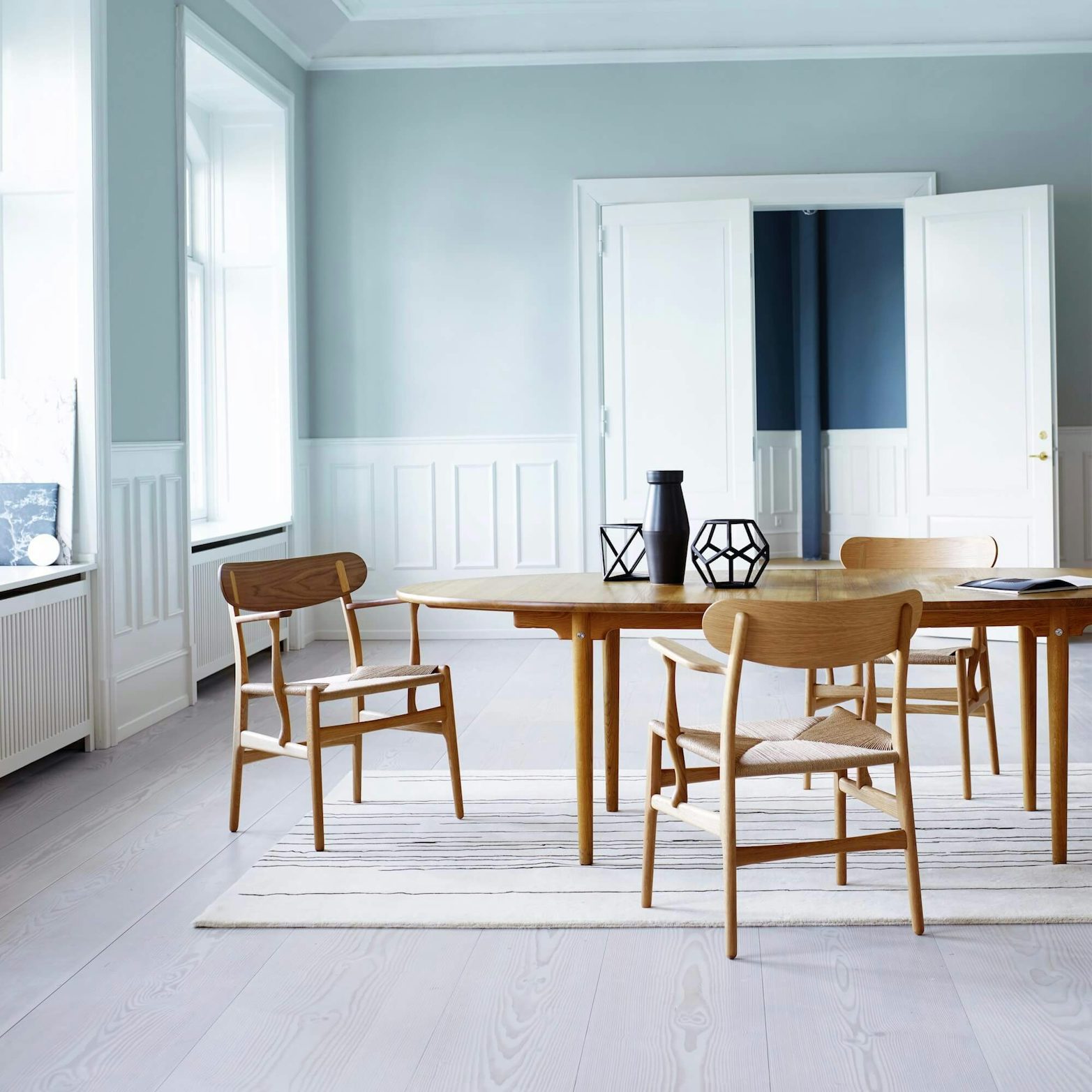Posted in Interviews
Interview: Knud Erik Hansen

Knud Erik Hansen, CEO of the Danish furniture company Carl Hansen & Søn, is a man on a mission.
Since taking over the helm of the family business, founded by his grandfather on the Danish island of Funen more than a century ago, he has acquired the rights to sell the work of Denmark’s most exceptional designers of the past and present. He’s also going global, exporting his distinguished collection to various corners of the world, all while spreading the message that high-quality, sustainably produced furniture is the way of the future.
We spoke with him about his formative years, his style of doing business, the forests of Denmark, and the time it takes to make a Wishbone chair, among other things.
What do you remember about your grandfather, Carl Hansen, and his workshop?
He was a very mild, quiet person who also had a fantastic sense of humor. I knew him when he was in his ‘70s, and to me, at the time he seemed quite old! He was also not very mobile because he was missing a leg- it had to be amputated as a result of diabetes- and yet once or twice a day he would walk to the factory on his crutches, and I’d go with him. I spent quite a bit of time with him and my grandmother because we lived just steps away, and the factory was on the same plot of land, so I grew up around the factory surrounded by all this furniture.

When did you become involved in the company, and was it a natural choice for you?
My dad died of a heart attack in 1962 when he was just 50 years old. Although my mother was a housewife who’d never been involved in the business, she decided to give it a try. It was a very brave decision, especially for a woman at that time, and for 20 years she managed to keep the company afloat. Early on, I realized I would not be able to work alongside my older brother when the time came for us to take charge. We had tried sailing together (we all sail in Denmark) and it was impossible for us to agree on anything. My career began at The East Asiatic Company, a shipping group that took me overseas for many years. Then I returned to Denmark to work as a managing director at Dan-Foam, the makers of Tempur-Pedic mattresses, and I helped the company grow until its sale in 2001. All this time, my brother had been running Carl Hansen without expanding it, there were only about 18 employees and few products- for me that was an unusual way of thinking. I asked him to buy my shares, thinking I’d go abroad again, and to my surprise he says he wants to retire. So I bought his shares instead.
What a story! And what was your business mindset at the time, what were some of your early goals?
One of the first steps I took was to build a new factory near the original workshop, a whole new plant with modern machines imported from Italy and Germany. Soon we started expanding internationally. I started with the U.S. market, which I was very familiar with after my experience with Dan-Foam, followed by the European market. By 2008, we had more than 160 employees at Carl Hansen & Søn. Then came the great depression, which was no fun at all. I had borrowed a lot of money, and we managed to pay the bank what we had to pay, but we had two very difficult years. Yet things started moving again, and at some point in 2010 the factory became too small, so we built yet another plant near the town of Gelsted that has about 270,000 square feet of space. I sold the previous plant, and I also had to sell my grandfather’s factory building from the 1930s. It was not an easy choice, but I needed the capital for the expansion.
Danish modern design became a global sensation a few years ago, how did that impact your company?
Maybe we had a little influence in that ourselves! We had lots of architects and designers visiting our showrooms, especially our Soho showroom which opened in 2011 (We have a fantastic new showroom in Flatiron). But essentially our products never went out of fashion. We’ve always had customers and I was never afraid we couldn’t get more. It was just a matter of going out there and showing what we have.
Do you have a sense of how much you’d like to grow? Do you ever fear you might become too big?
If you go to Milan’s Salone del Mobile, you realize that the Scandinavian companies are very small compared to the Italian or German makers. I don’t think we can become too big, but we do have certain limits. I like to know every single person who works with us because it’s still a family company and there‘s a certain atmosphere that I want to maintain. With regards to the staff, I wouldn’t want to be so big that I couldn’t know everyone. We have 400 employees around the world now.
How has the production process evolved? How do you balance craftsmanship with technology?
It’s not an easy balance, but we do it. All of the hard work, the kind that really wears a person out, like cutting wood, is now automated. The steam-bent backrest of the Wishbone Chair, for example, is done by a machine. But all the rest, about 100 steps including assembling, sanding, polishing, spray-painting, and cording the paper-yarn seat, is done by hand. This part of the process is performed by craftsmen and takes about eight hours [although from start to finish, the production of one chair takes about a week]. Right now we have 11 young apprentices learning from some of our most skilled and experienced workers, and we intend to open an academy within the factory by 2020 so we can host up to 30 apprentices. We want to go back to the old way of learning from a master.
Can you tell us a bit about your sustainable practices?
We are very conscious of the environment, I think all Danes are born with that kind of mindset, it’s a very clean country. What we produce is made of natural materials, and we buy our wood from sustainably managed forests. Luckily, Danish forests are growing because there are laws in place to protect our famous oak and beech trees. As for the waste we generate, mostly wood shavings, it’s used for heating. We have two big heaters in the factory, and we also teamed up with the local municipality to help them save money by using our shavings.
How do you decide to start producing a certain iconic piece in large numbers, to make it part of your current collection?
I have decided to move forward with a certain taste. For me it’s important that our pieces look like part of the same family, that everything we produce matches together. For example, Olé Wanscher’s Colonial Chair, which is an easy lounge chair that we started making some years ago, fits so well with Wegner’s collection. In the last six or seven years I’ve bought several smaller companies, and with them the right to produce furniture from some of Denmark’s most important designers. I have a substantial archive and there’s still a lot that can go into production.
Aside from Hans J. Wegner and the other midcentury masters in your collection, do you work with younger designers? What about female designers?
We have a talented young designer called Naja Utzon, she’s the granddaughter of Jørn Utzon who designed the Opera house in Sydney, and she is doing fantastic carpets. A lot of her inspiration comes from nature. We now have lamps, carpets, and other things, our catalogue has become more lifestyle oriented. We are also soon re-launching a series of outdoor furniture designed by Bodil Kjær, a pioneering female architect, in 1959.
How do you imagine the future of Danish Modern design?
If we play it cleverly and maintain our high quality and sustainability we have a great future. The environment is something our world really needs to think about. You can get a copy of one of our pieces, or any inexpensive furnishing, and it doesn’t last. People end up throwing it away, but I think the throwaway mentality is becoming a thing of the past. Our furniture lasts for generations, so our quality is the key to our continuity. We have been producing wood furniture in Denmark for thousands of years.



